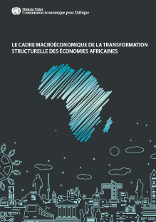Macroeconomic Policy and Structural Transformation of African Economies

Africa’s growth has turned around impressively since the start of the century. Against the backdrop of the commodity boom that began in the early 2000s, Africa as a natural resource–rich continent has achieved higher gross domestic product (GDP) growth than in its own past and than in developing regions such as Latin America and the Caribbean.
African countries grew at close to 6 per cent a year over 2001–2008 and coped with the impact of the global financial crisis of 2008–2009 and the subsequent downturn of the world economy relatively well (IMF, 2013; AfDB et al., 2014). And in a break with historical trends, growth rates in Central, East, Southern and West Africa have surpassed that in North Africa in the immediate aftermath of the crisis, while those in several countries in North Africa have been hit by political unrest and civil conflict since 2010. Robust annual growth of nearly 5 per cent for Africa is forecast to continue, making it one of the fastest-growing regions in the world, after it reached an estimated growth of 3.9 per cent in 2014 (ECA, 2015).1
This apparently secular turnaround has led to a marked sea-change in investors’ attitudes to African prospects, raising hopes that it will finally emerge as a new growth pole. In the media worldwide, the narrative has become the African renaissance or Africa rising. Not only is Africa blessed with rich natural resources, but it has a demographic dividend (a young working-age population), which investors’ increasingly factor into their decisions. Many emerging economies — Brazil, China, India, the Republic of Korea, Turkey and capital-rich Gulf States — have boosted their economic ties to Africa and increasingly engaged with it as a key development partner as part of invigorated South–South cooperation. The high growth has not been confined to a handful or two of resource-rich economies, but has started spreading across other middle- and low-income countries such as Ethiopia and Rwanda.
Yet it is by no means universal. The majority of African countries have scarcely diversified their narrow-based, commodity-dependent economies or significantly changed their socioeconomic structures. Foreign and domestic investment may have stepped up sharply and domestic demand risen as the middle classes have driven demand over the last decade, but Africa’s growth still depends on external factors. The commodity boom that shifted investors’ perceptions has yet to generate economy-wide spillover effects at country, regional and continental scales.
1 The outbreak of the Ebola epidemic affected the economic growth of several Western African countries in 2014, but had virtually no impact on continental growth.